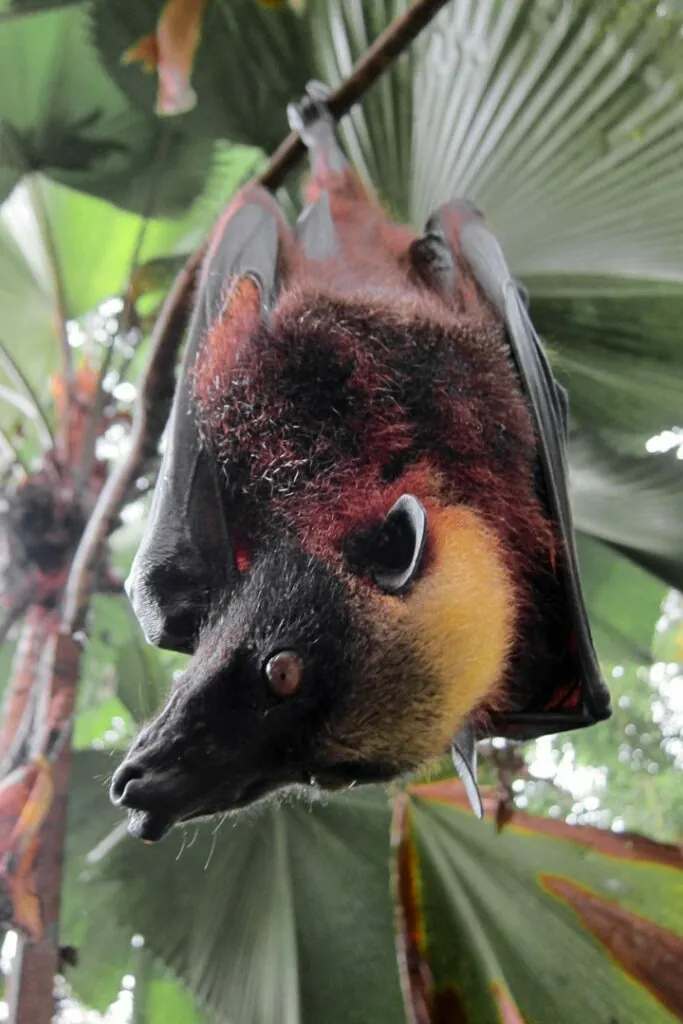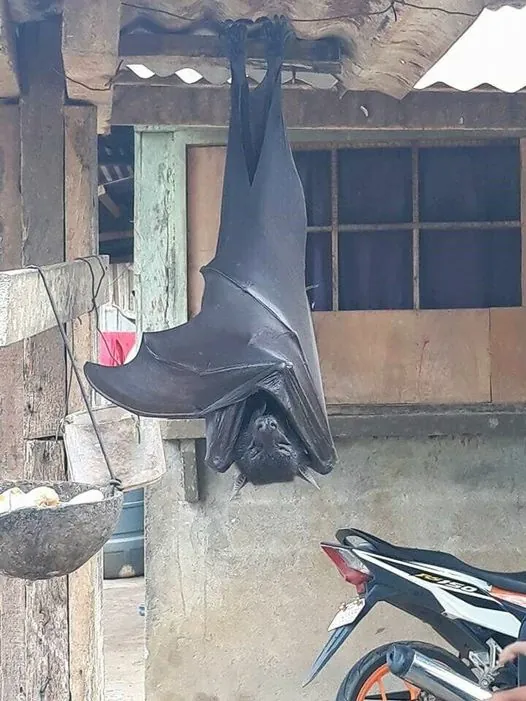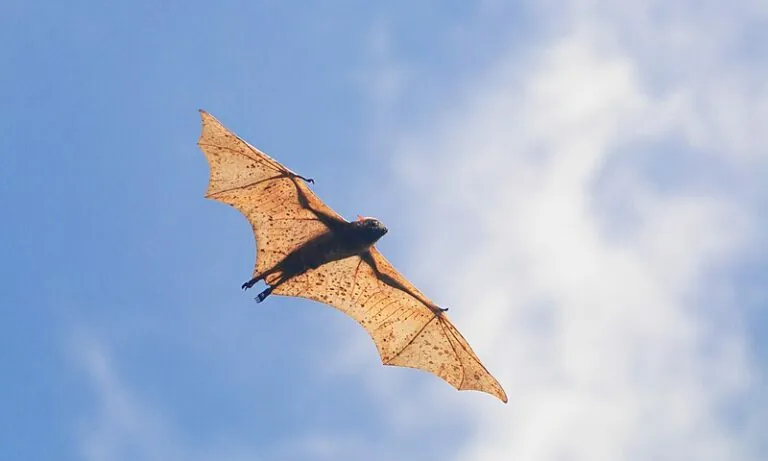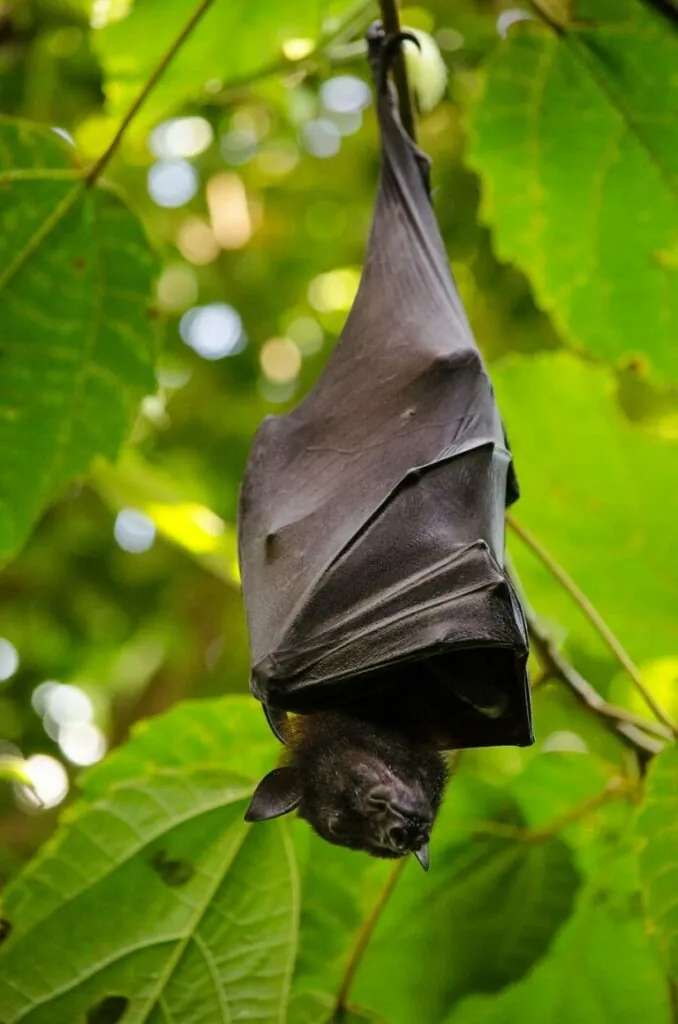With a wingspan almost as large as Tom Cruise, the golden horseshoe bat looks menacing as it soars like an eagle. Their slender, furry bodies are about the same size as their wings. And the black cloak that hangs when he sleeps makes him look like a vampire.
Despite their intimidating size, giant fruit-eating bats endemic to the Philippines are harmless and show no signs of attacking humans. Humans invade their habitats and poach them for sport and food, making them an endangered species. Shocked by their size and predatory appearance, people have been intrigued and horrified by viral photos of these helpless and endangered creatures.

When the photo first went viral, it was initially described as a “human-sized” bat, but this incorrect description caused confusion and fear. To learn more about this unusual insect, we need to clarify a few things.
First, they’re not “human-sized” unless, using a very generous definition, you’re comparing them to a “small child” rather than a regular adult. With a wingspan of about 6 feet, a body length of 7 to 12 inches, and a weight of less than 3 pounds, the greater golden horseshoe bat is one of the largest bats in the world.

Fig-loving bats are nocturnal herbivores that hunt roots, fruits and vegetables at night. His head is covered with a fluffy crown of gold.
Although other species of the flying fox family are found in Asia, Africa and Australia, the golden-crowned flying fox (Acerodon jubatus) is found only in the jungles of the Philippines and often lives in flocks of up to 10,000 individuals. It spends its days with its companions sleeping in trees with its claws dangling from its toes.
Sometimes the giant flying foxes, with wingspans of less than 5 feet, slept alongside their smaller cousins, the giant bats. Golden-crowned flying foxes do not use echolocation like many other bats. Instead, they use their sense of sight and smell to find their way through the air.

Flying bats contribute to reforestation in the Philippines by combating deforestation by dispersing fig seeds after feeding. Unfortunately, the more people make bats work, the more they die.
According to Bat Conservation International (BCI), more than 90% of the primary forests in the Philippines have been destroyed, and the species has disappeared from former sanctuaries on many of the islands. The population of golden horseshoe bats has declined sharply since 1986, dropping by 50%.
This decline is caused by habitat destruction and hunting for recreation, trade and personal consumption. Given that the International Union for Conservation of Nature (IUCN) protects endangered species.
The Philippine Wildlife Conservation and Protection Act of 2001 protects bats, but the law is not enforced. Although most of the animals are in protected areas, many are still killed. Hunters shoot sleeping animals, an incredibly cruel and frightening act. When many injured animals die, they put their fingers on the tree branches to stop them from falling.
Remember when I told y'all about the Philippines having human-sized bats? Yeah, this was what I was talking about pic.twitter.com/nTVIMzidbC
— hi monica (@AlexJoestar622) June 24, 2020
Although humans are a major threat to bat populations, flying foxes are not afraid of humans. They can be seen playing in forests near villages or towns, on power poles or in settlements where they feel comfortable. However, they can distinguish between safe and unsafe environments and can move and live in inaccessible areas, such as slopes more than 300 meters above sea level. Studies have shown that these bats are as intelligent as dogs, have excellent memories and learn very quickly.
A study of operant conditioning found that human-raised flying foxes were actually trained to pull a lever instead of a juice reward. Most importantly, the lever was immediately removed because the rats knew they would receive a reward when they returned to their comfortable lab three and a half years later.

Some people find the unique physical characteristics of bats unsettling or scary. Their large eyes, sharp teeth and leathery wings can startle or make you uncomfortable.
Despite their infamous reputation as killer animals, only three of the 1,300 bat species consume human blood. Golden-crowned flying foxes are super cute, if you can get over how scary they are!
It saddens me that these intelligent and innocent animals are dying and losing their habitat to deforestation. If you agree, please spread the word about this innocent and endangered species!

